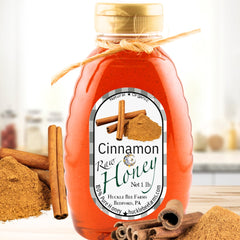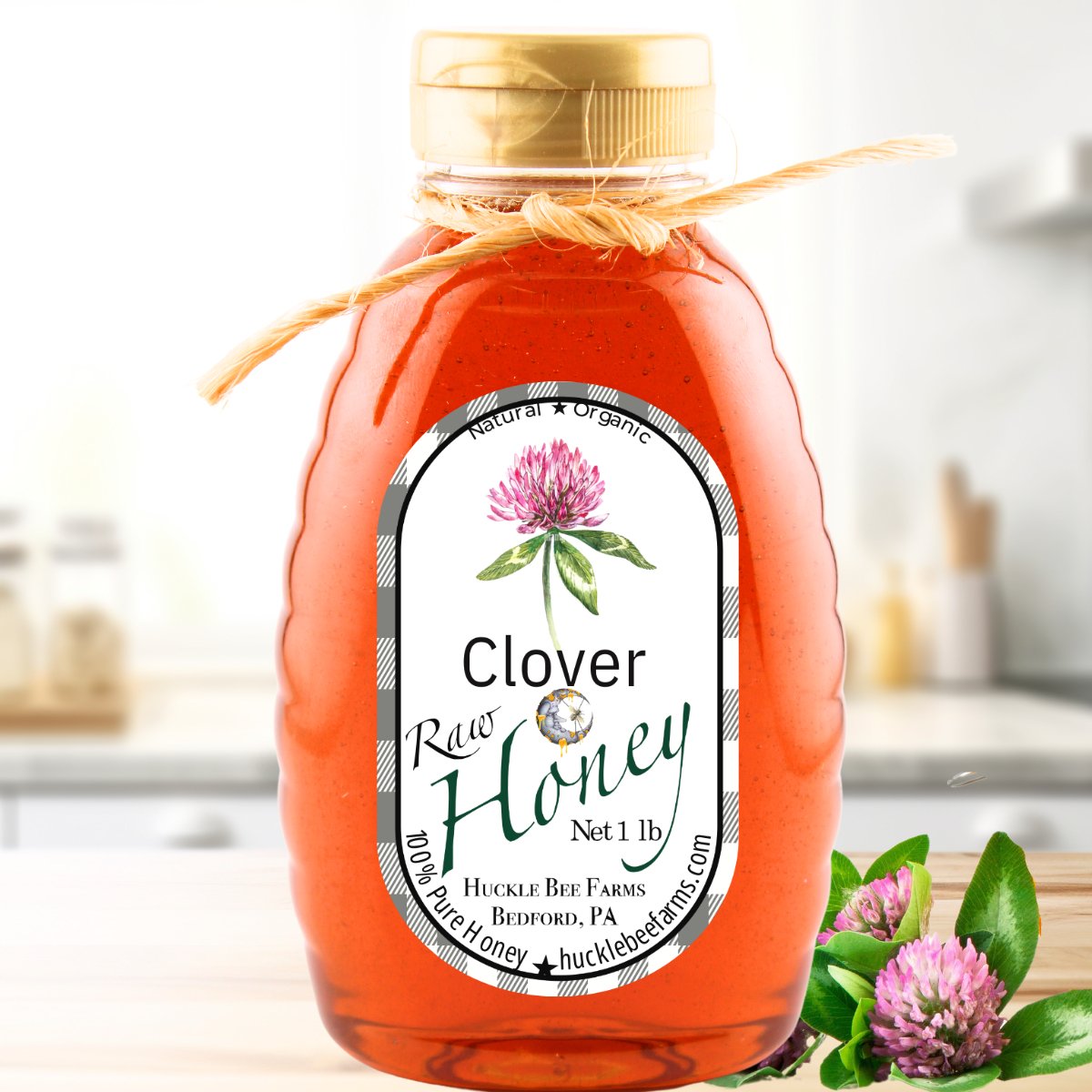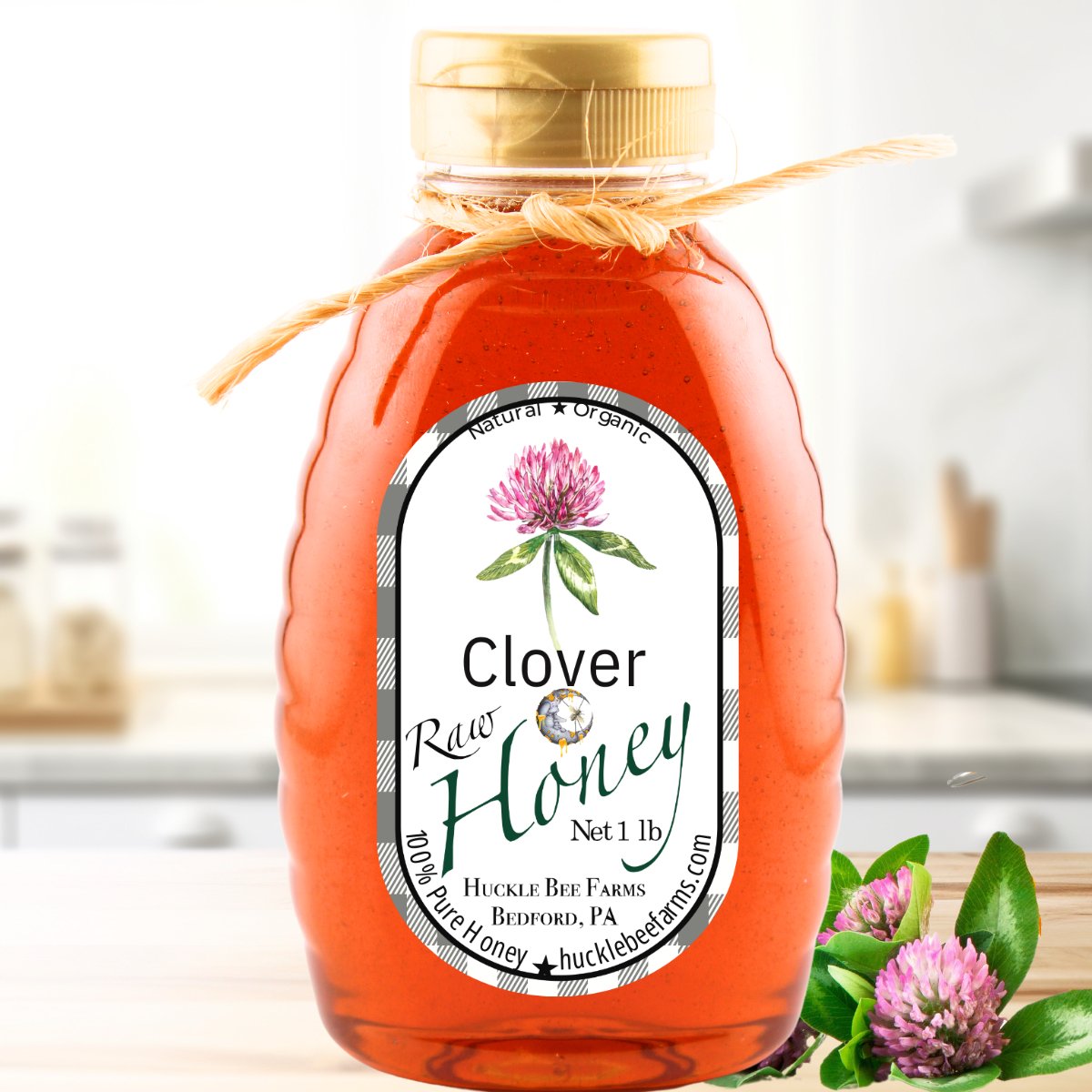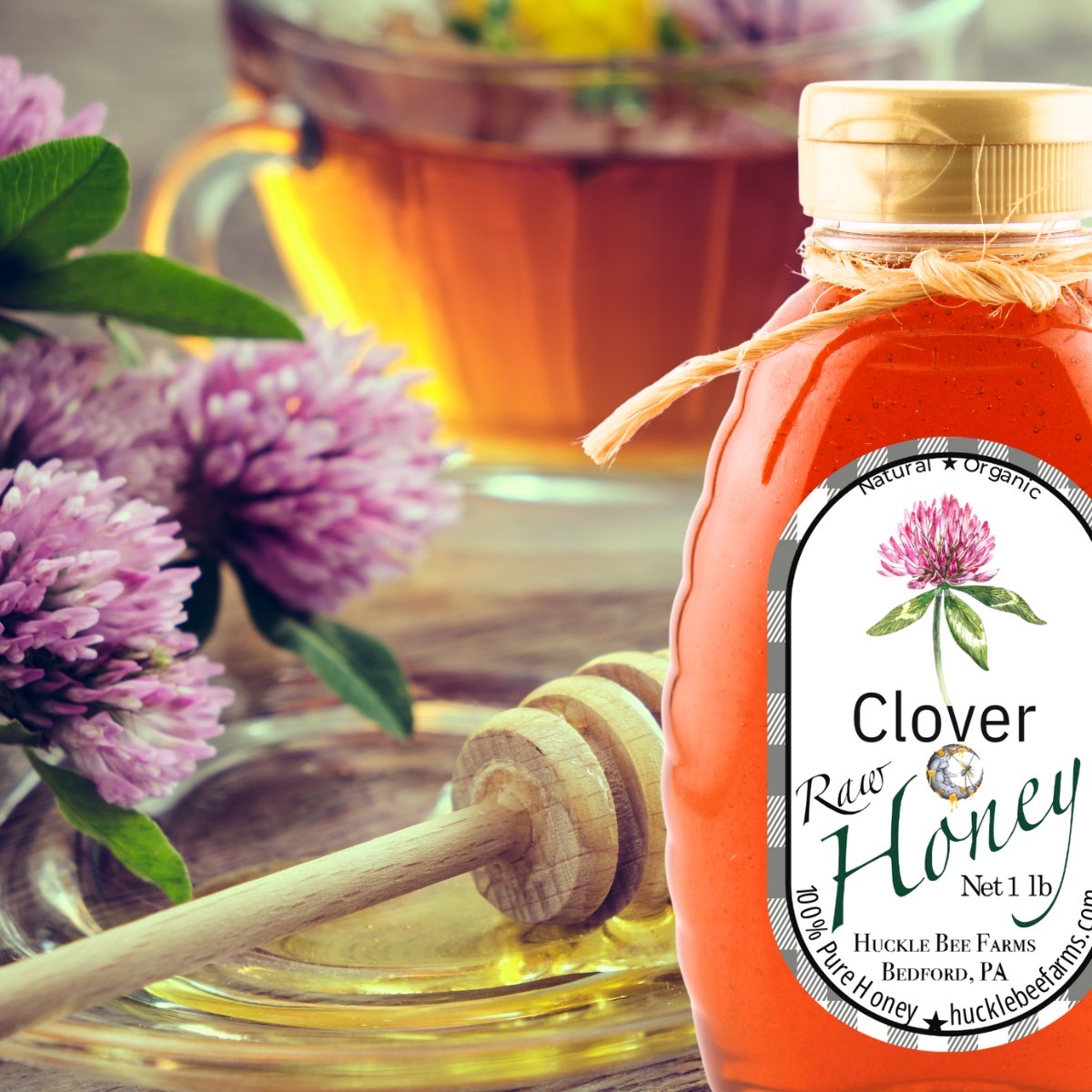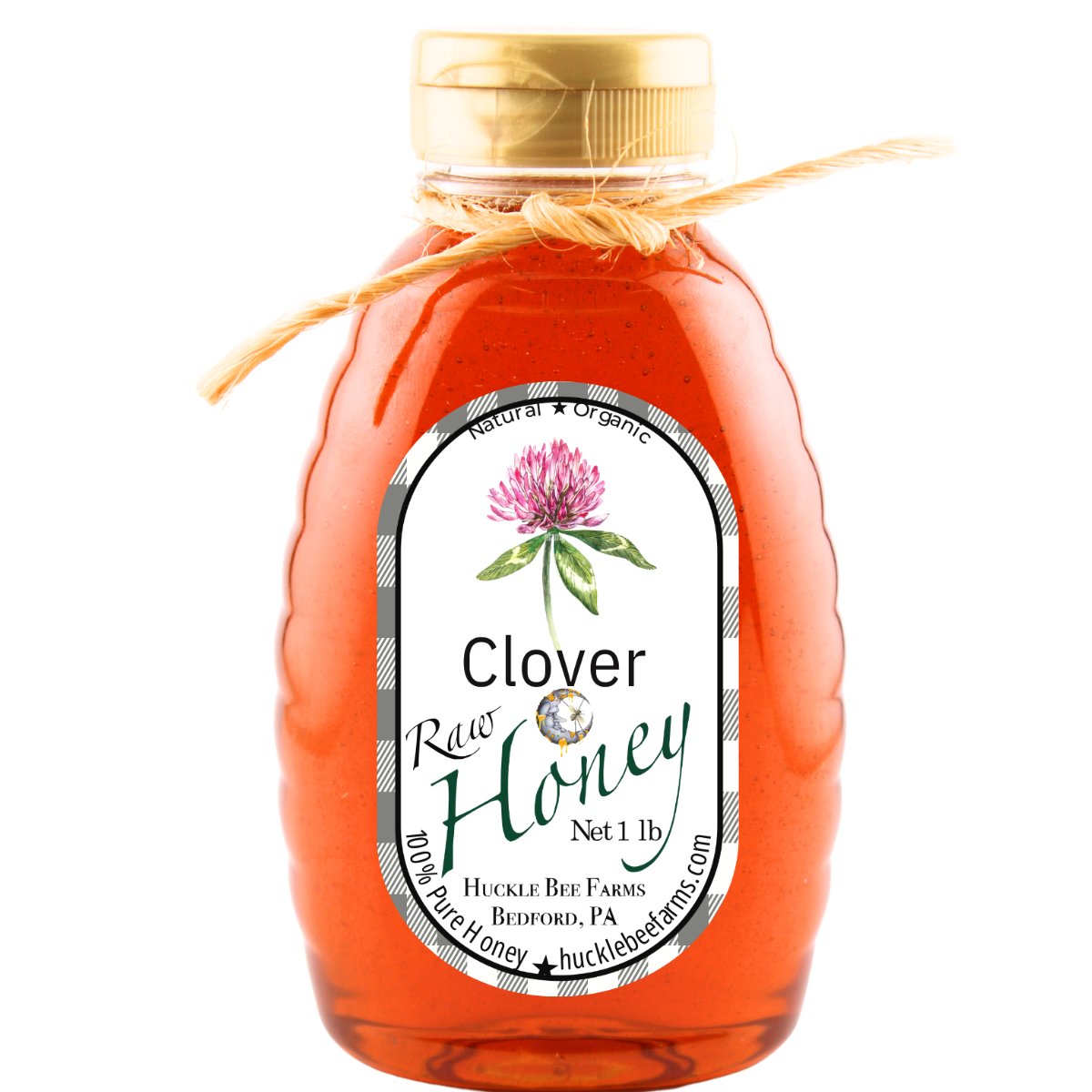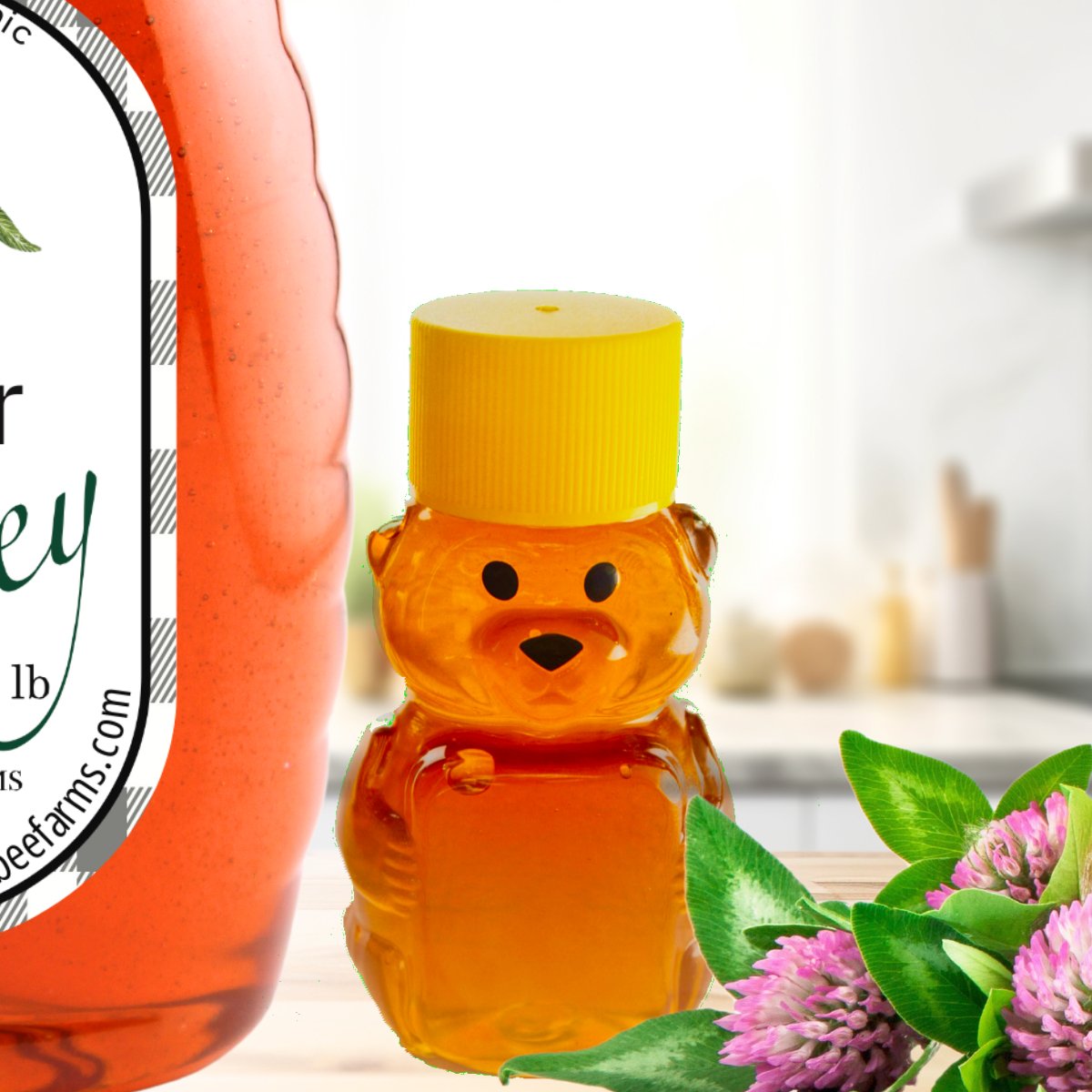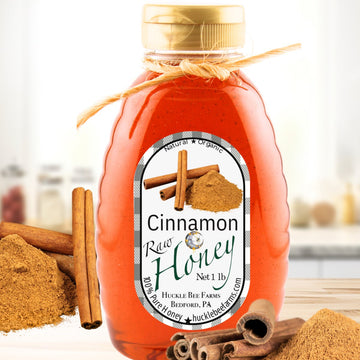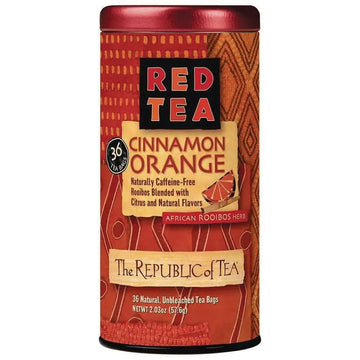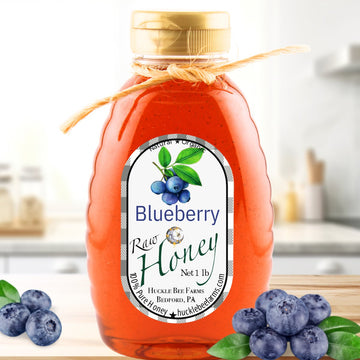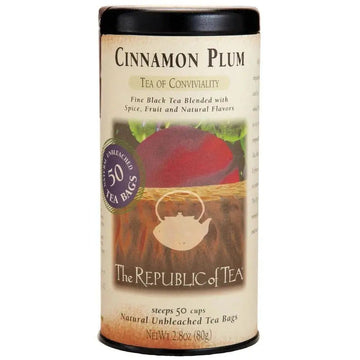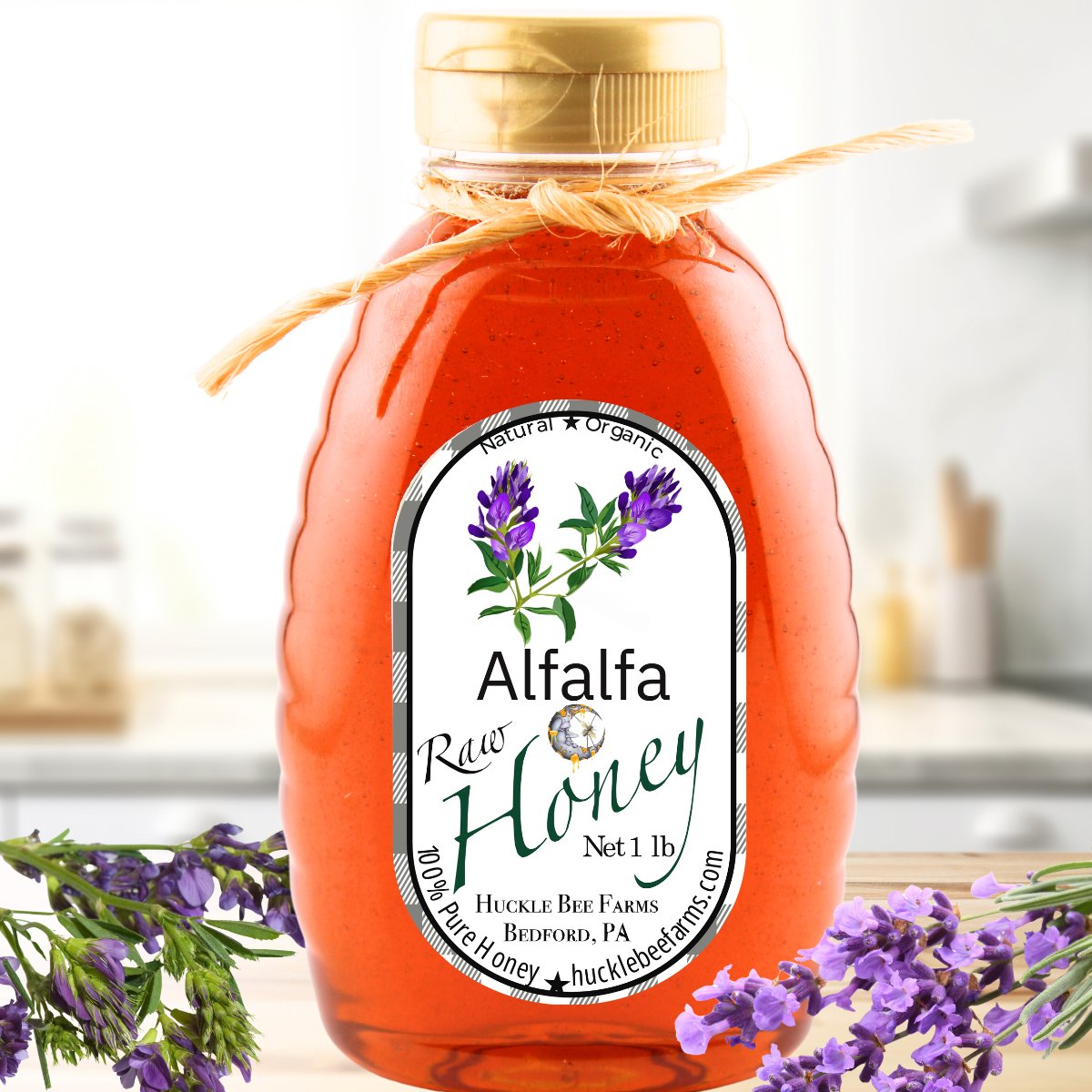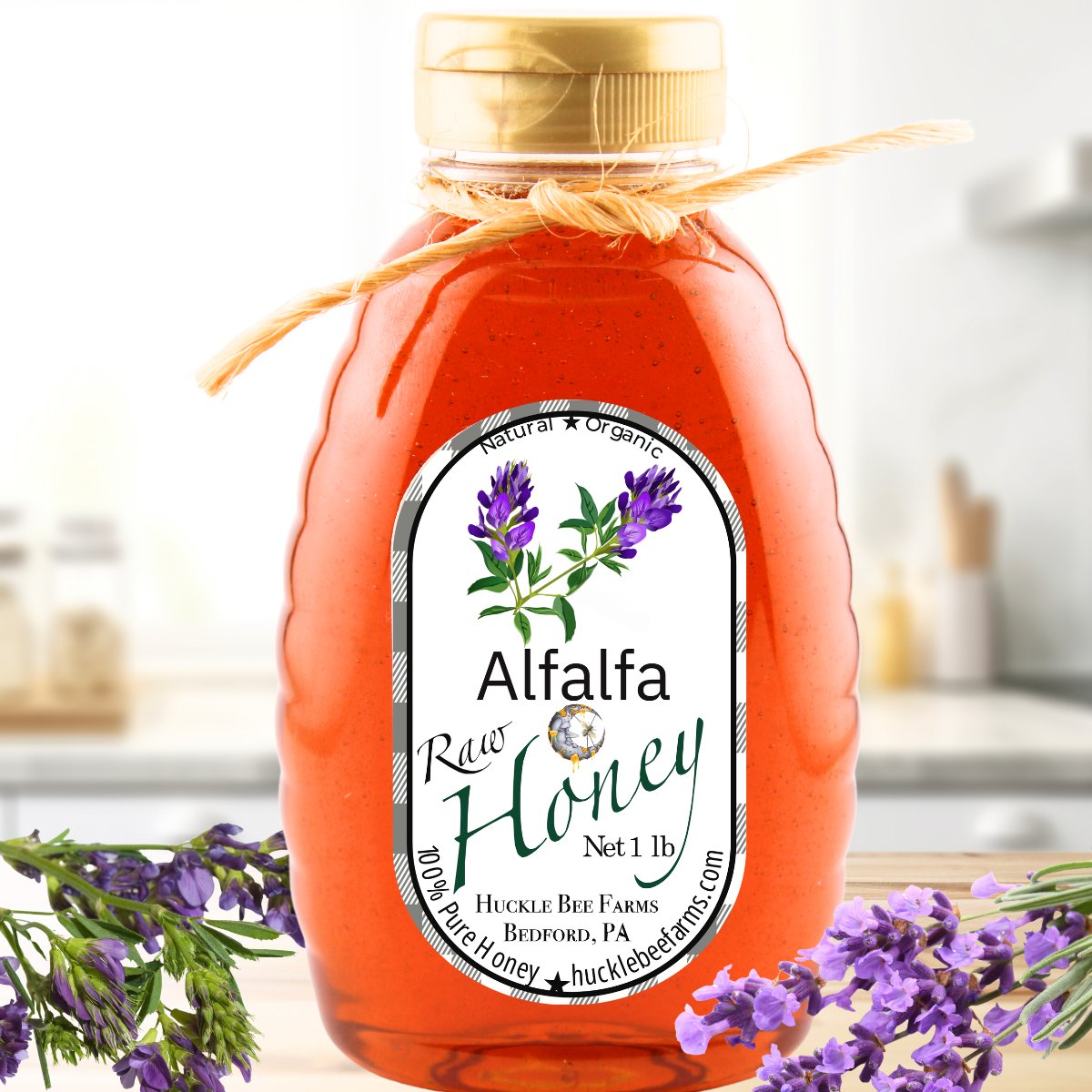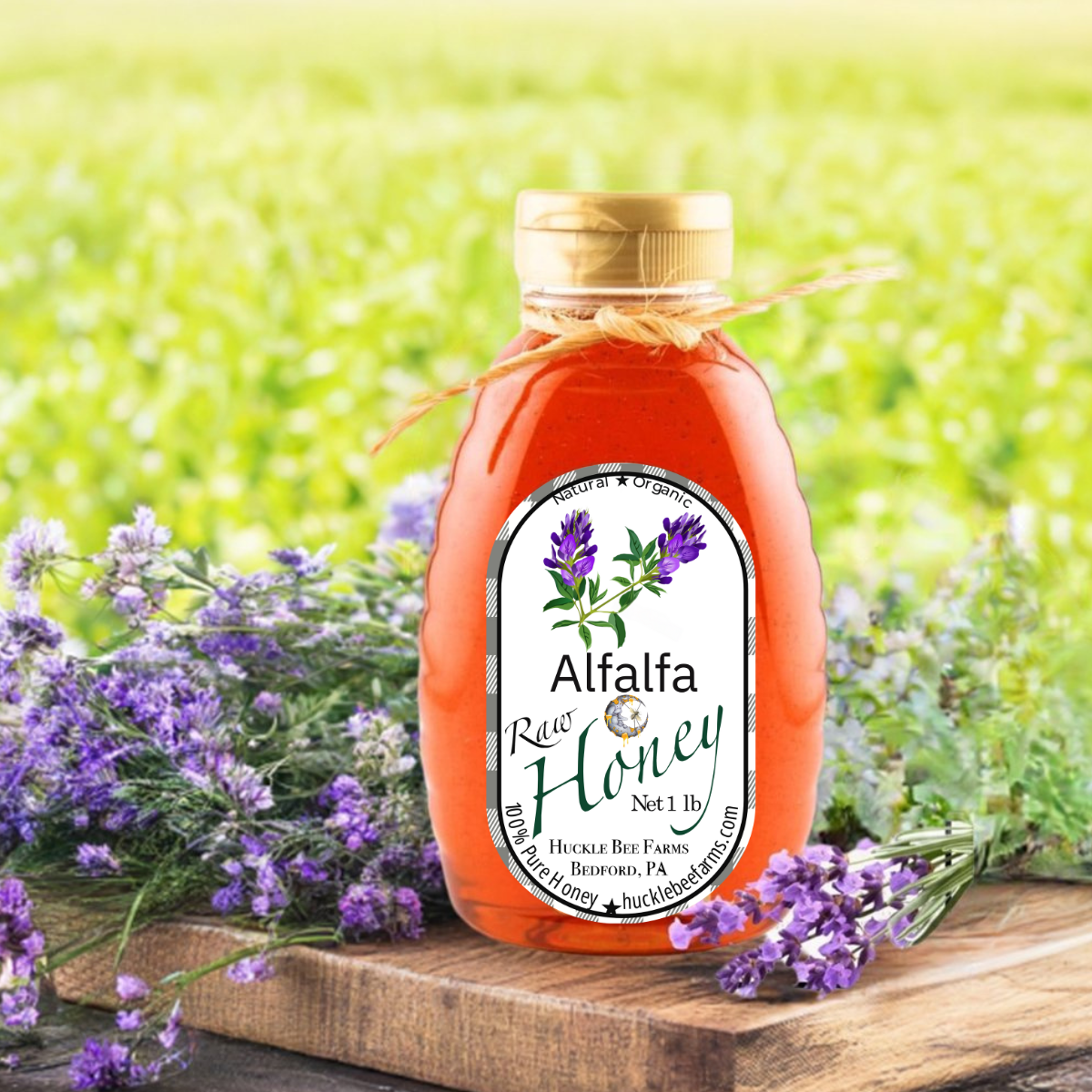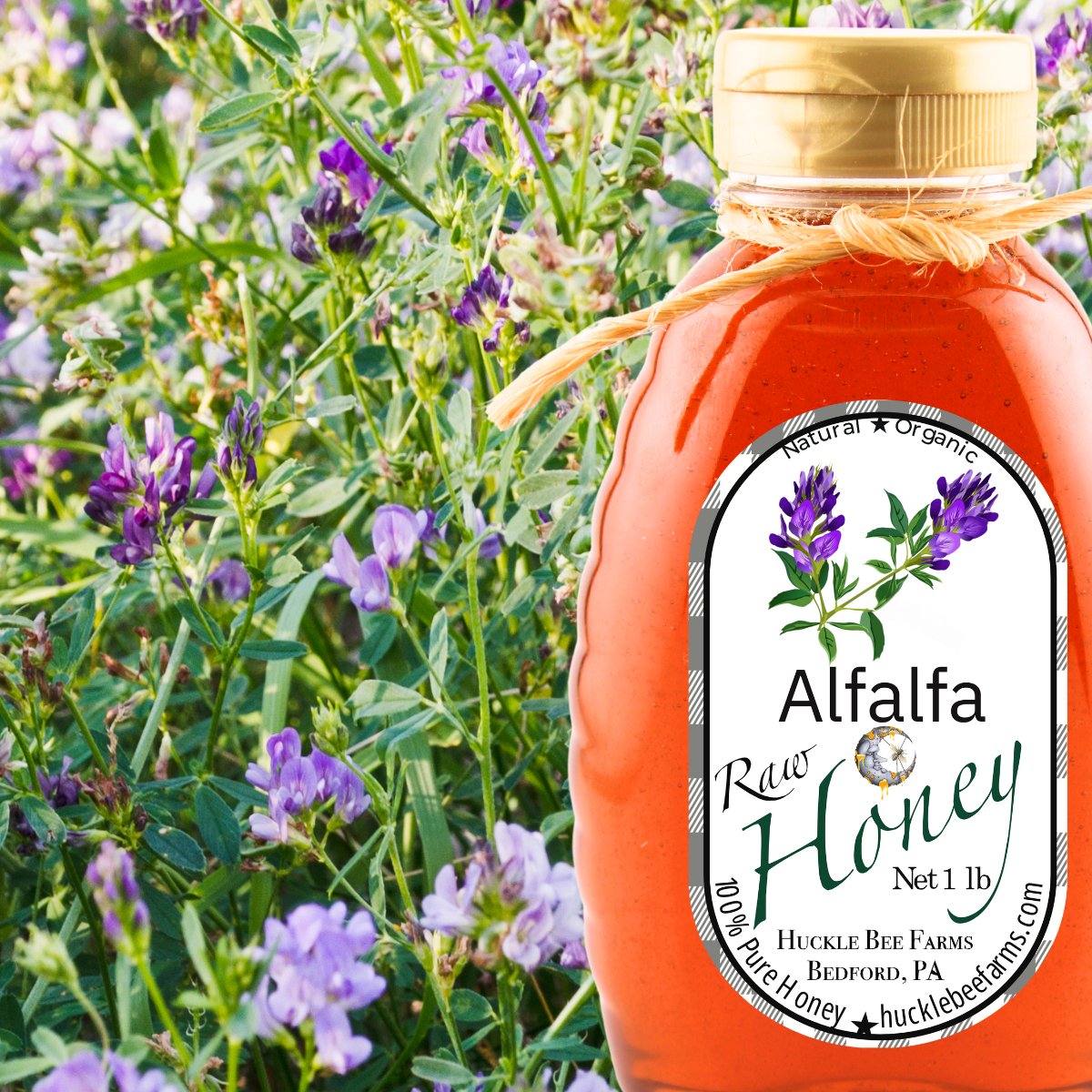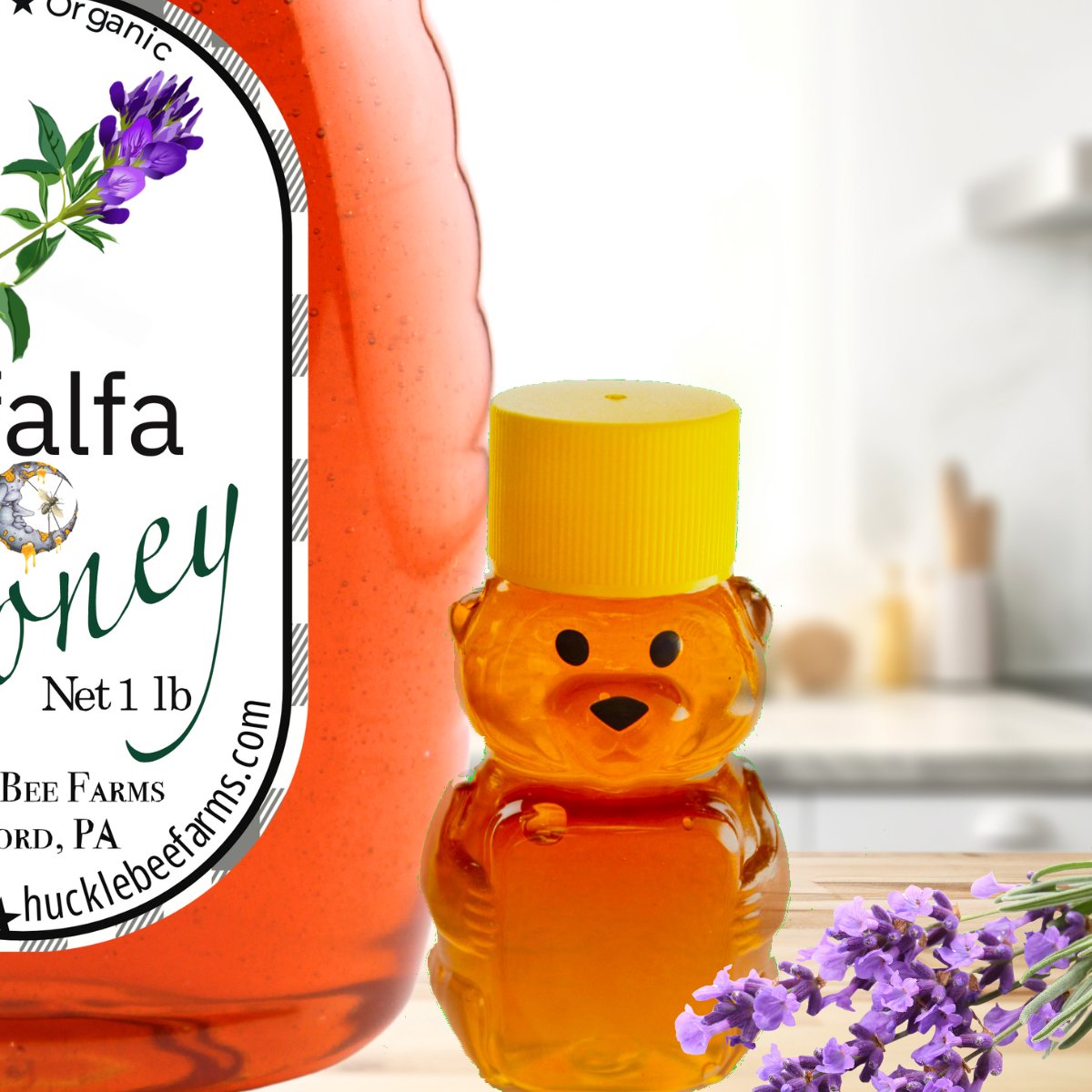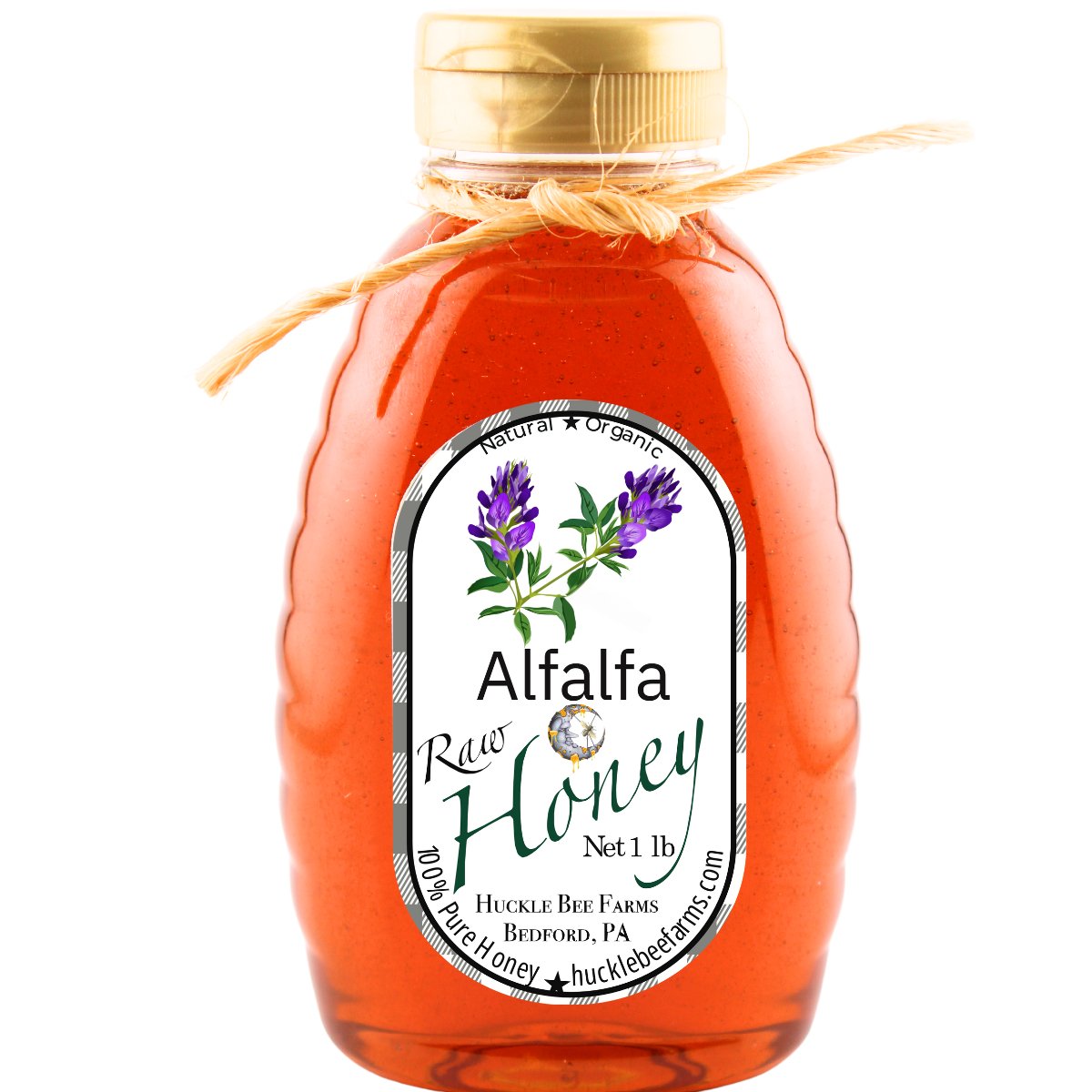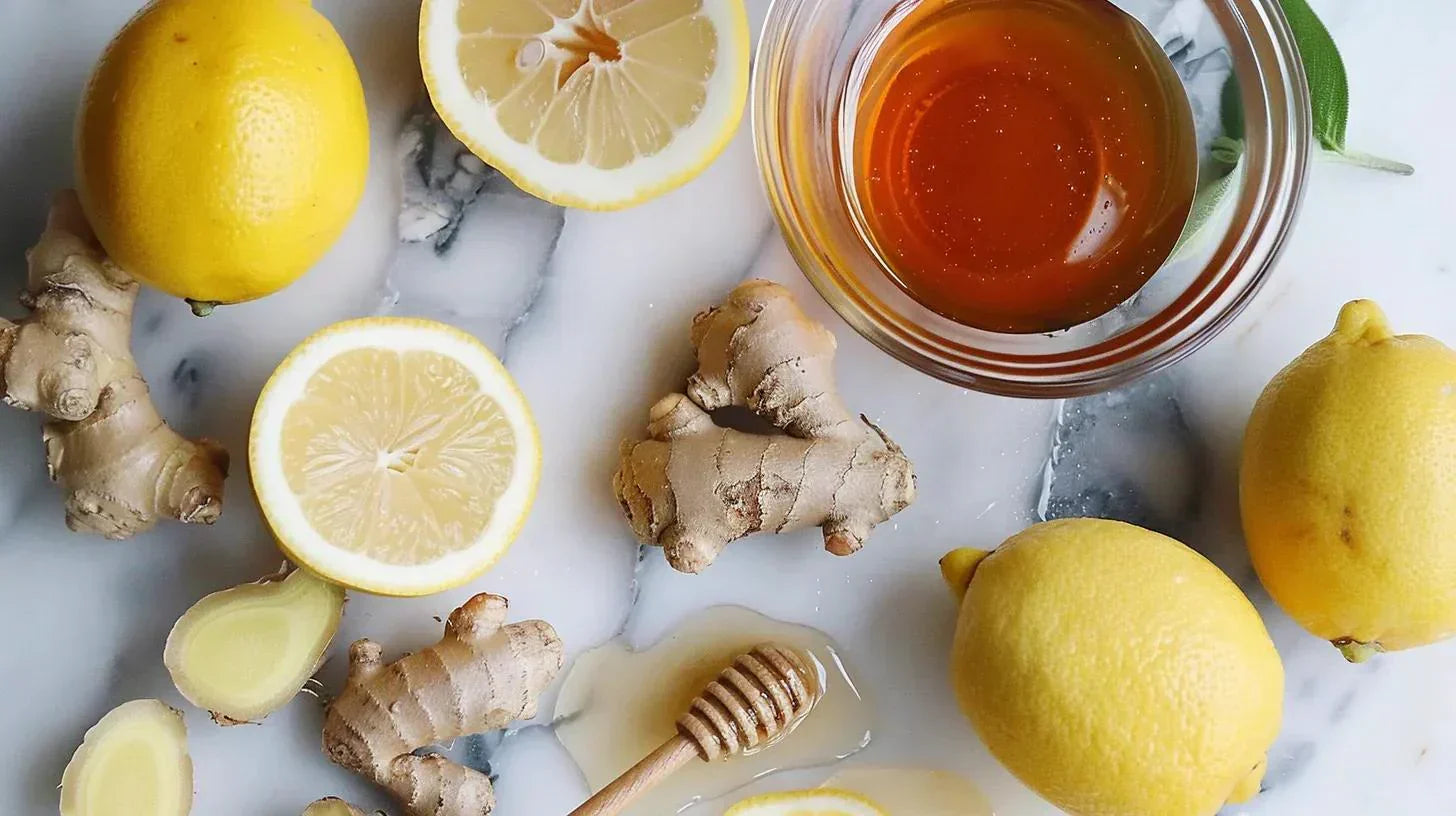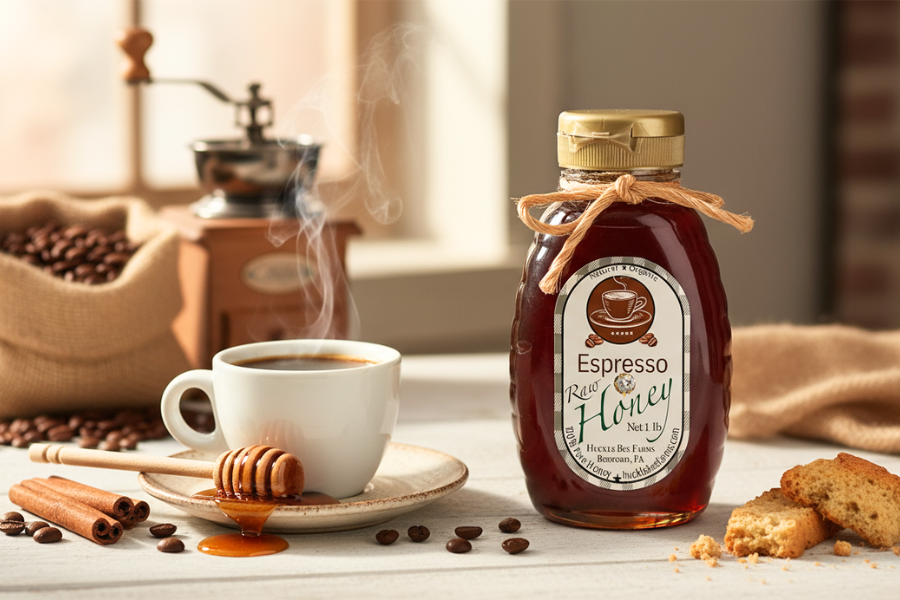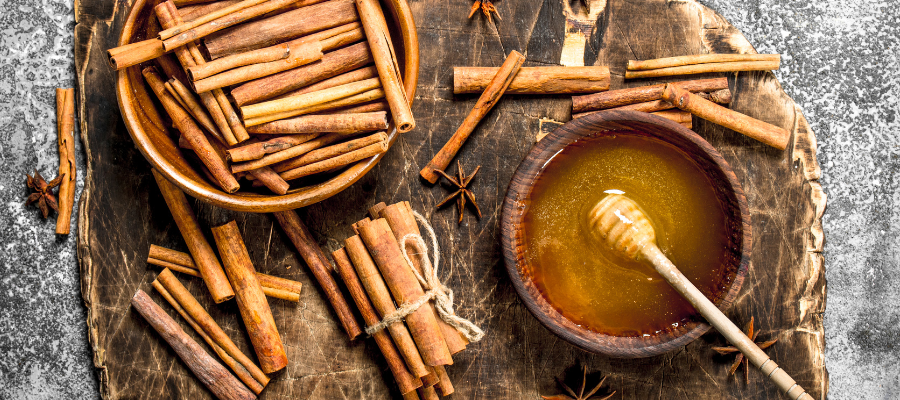
Cinnamon Honey: Health Benefits & Delicious Recipes from Huckle Bee Farms
Table of contents
Cinnamon honey, a delightful fusion of raw honey and cinnamon, is a flavorful ingredient that can boost your immunity, support digestion, and add a touch of magic to your cooking.
This guide explores what cinnamon honey is, how it’s made, and why it supports immunity, gut health, and everyday cooking. You’ll get science-backed insights, recipes, and safe-use tips, plus a comparison of cinnamon types and how Huckle Bee Farms crafts its infused honey. Expect easy-to-follow benefits, recipes, FAQs, and buying advice—all featuring key phrases like “cinnamon honey,” “cinnamon infused honey,” and “raw honey benefits.”

What Are the Key Health Benefits of Cinnamon Honey?
Cinnamon honey brings together the best of both worlds: raw honey offers natural antimicrobial enzymes and antioxidants, while cinnamon contributes beneficial polyphenols and compounds that may help with insulin sensitivity. The magic happens as honey's natural defenses, like hydrogen peroxide and other non-peroxide factors, team up with cinnamon's cinnamaldehyde and polyphenols to combat oxidative stress and support metabolic balance. Together, these elements can bolster your immune system, calm your digestive tract, positively influence cholesterol levels, and provide anti-inflammatory effects that can even benefit your skin when applied topically.
This table breaks down the health benefits, explains how they work, and shows you the level of evidence, so you can easily see how it applies to your life and what the science says.
| Benefit Area | Key Mechanism | Evidence Level |
|---|---|---|
| Immune support | Antimicrobial (honey enzymes) + antioxidant (cinnamon polyphenols) | Moderate (lab studies + small human trials) |
| Digestive wellness | Soothing enzymes, prebiotic sugars in raw honey; cinnamon eases GI discomfort | Emerging (traditional use + early studies) |
| Heart health / cholesterol | Antioxidant protection for lipids; cinnamon may help lower LDL and triglycerides | Moderate (small human trials) |
| Blood sugar regulation | Cinnamon compounds may improve insulin signaling; honey has a lower glycemic impact than some sugars | Mixed (variable human studies; use with care) |
| Anti-inflammatory & skin healing | Honey's proven wound-healing properties; cinnamon's anti-inflammatory compounds | Moderate (strong evidence for topical honey; systemic effects are developing) |
How Does Cinnamon Honey Support Immune Health?
- Cinnamon honey bolsters your immune system by combining honey's natural antimicrobial enzymes—like glucose oxidase from bees that creates a bit of hydrogen peroxide—with cinnamon's own antimicrobial and antioxidant powers. These work together to reduce the presence of germs in your mouth and throat and lessen oxidative stress that can weaken your immune defenses. A warm mug of this tonic or a spoonful when you're feeling under the weather can be a comforting way to soothe symptoms while delivering these beneficial compounds. Recent research and lab findings confirm honey's strong antimicrobial and wound-healing capabilities, and cinnamon's role in immune support shows promising potential, though more clinical studies are needed.
- Cinnamon honey's immune-boosting qualities complement a healthy diet and lifestyle, making it a sensible addition to your daily wellness routine. This connection between how it works and how you can use it naturally extends to digestive and gut health, where both honey and cinnamon interact with your gut's natural balance and defenses.
- Research suggests that combining honey and cinnamon can be a powerful way to combat antimicrobial resistance, as each component offers unique ways to fight bacteria.
"Synergistic Antibacterial Effects of Honey and Cinnamon Against Streptococcus Mutans"
The synergistic effect of honey and cinnamon against Streptococcus mutans bacteria. The study was conducted to evaluate the synergistic effect of honey and cinnamon in combination against Streptococcus mutans bacteria. The results showed that the combination of honey and cinnamon had a significant inhibitory effect on the growth of Streptococcus mutans bacteria. The study concluded that honey and cinnamon can be used as natural agents to prevent and treat dental caries.
Cinnamon honey's immune-supporting properties work well with other healthy habits, and enjoying it in moderation can be a great complementary strategy. This link between how it supports your immune system and how you can practically use it naturally leads into its benefits for digestion and gut wellness, where honey and cinnamon also interact with your gut's natural environment and defenses.
Studies on infusing spices into honey show that various elements, phenols, and flavonoids are released, potentially enhancing the honey's nutritional and functional value.
"Antibacterial Properties of Honey and Cinnamon: A Synergistic Approach"
Honey possesses a potent antibacterial activity against a wide range of bacteria. High osmolarity, acidic pH, hydrogen peroxide production, and the presence of nonperoxide compounds provide various mechanisms for honey to act against bacteria. Cinnamon also has the ability to act on a number of bacteria through destruction of cell membranes, anti-quorum sensing effect, ATPase inhibition and membrane porins inhibition. Thus, the combinations of honey and cinnamon have shown important interactions such as synergistic, additive and antagonistic effects due to the interactions among various constituents in them. Their combined action varies depending on the honey type, cinnamon plant species, cinnamon extract type, etc. Therefore, both honey and cinnamon can be considered as good candidates for developing new antimicrobial agents.
Can Cinnamon Honey Improve Digestion and Gut Wellness?
Cinnamon honey can help with digestion thanks to honey's gentle prebiotic oligosaccharides and digestive enzymes, along with cinnamon's antispasmodic and anti-inflammatory compounds. These qualities can help ease mild stomach discomfort and promote a balanced gut environment when part of a varied diet. A common way to enjoy it is by stirring a spoonful into herbal tea after meals or using it as a mild sweetener for breakfast cereals to help reduce irritation and support digestion. While specific clinical studies on cinnamon honey itself are still limited, the known effects of its individual components strongly suggest benefits for gut comfort and microbial balance.
To get the most out of cinnamon honey for your gut health, pair it with fiber-rich and fermented foods. This approach also ties into broader cardiovascular and metabolic health, which we'll explore next.
What Role Does Cinnamon Honey Play in Heart Health and Cholesterol Management?
- Cinnamon honey may contribute to heart health mainly through its antioxidant power, which helps protect your lipids from damage, and through cinnamon's reported modest effects on cholesterol and triglyceride levels. The antioxidants found in raw honey and the polyphenols in cinnamon both work to reduce oxidative stress, a key factor in atherosclerosis and dyslipidemia. Clinical trials looking at cinnamon have shown varied but sometimes significant reductions in LDL cholesterol and triglycerides, suggesting that cinnamon honey can be a great addition to a heart-healthy diet. We recommend using cinnamon honey to replace refined sugars and enjoying it with meals rich in fiber and healthy fats to maximize its cardiovascular benefits.
- This focus on heart health naturally leads to discussions about metabolic control and blood sugar management, so the next section will explain how cinnamon honey interacts with blood sugar levels and how to consume it safely.

How Does Cinnamon Honey Help Regulate Blood Sugar Levels?
- Cinnamon honey influences blood sugar in two helpful ways: cinnamon's compounds may enhance insulin sensitivity, helping your cells take up glucose more effectively, and raw honey's glycemic index is often lower than that of refined sugar, depending on its floral source. These effects can help moderate blood sugar spikes after meals when you use cinnamon honey instead of higher-glycemic sweeteners. However, the research is mixed, and it's crucial for individuals managing diabetes to consult with their healthcare providers, as honey still contains sugars and calories. Mindful portion control and timing—like pairing cinnamon honey with protein or fiber—can help minimize its impact on blood sugar and allow you to use it strategically rather than as a free-for-all remedy.
- Balanced, measured use for metabolic goals is far better than large, unmonitored intake. Safety considerations and dosing advice will be covered later in the section on daily incorporation.
- Studies on infusing spices into honey show that various elements, phenols, and flavonoids are released, potentially enhancing the honey's nutritional and functional value.
What Are the Anti-Inflammatory and Skin Health Benefits of Cinnamon Honey?
Cinnamon honey offers anti-inflammatory support both internally, thanks to polyphenols that help reduce inflammatory signals, and externally, leveraging honey's well-known wound-healing and antimicrobial properties. When applied topically, raw honey has proven benefits for wound care and preventing infections, while cinnamon can add its own antimicrobial and aromatic qualities to topical formulations. Internally, the anti-inflammatory compounds can help lower systemic inflammation markers when combined with an anti-inflammatory diet and lifestyle. For simple topical uses, like a quick honey mask for minor irritation, always be mindful of potential allergies and perform a patch test first.
These anti-inflammatory and skin benefits round out the primary advantages and naturally lead us into the culinary uses where cinnamon honey truly shines with its flavor and functional nutrition.
"Honey and Cinnamon Combination Therapies for Skin and Wound Infections"
Topical application of medical grade honey is recommended for wound care. Furthermore, the anti-inflammatory effects of the honey (75%), antimicrobial properties, and its ability to promote wound healing make it a valuable therapeutic agent. Cinnamon, containing compounds like cinnamaldehyde, also exhibits antimicrobial and anti-inflammatory properties, suggesting its potential in combination therapies for skin conditions.
How Can You Use Cinnamon Honey in Delicious and Healthy Recipes?
Cinnamon honey is incredibly versatile, perfect for drinks, baking, marinades, breakfasts, and desserts—it masterfully blends sweetness with warm spice and beneficial properties. When raw honey is infused with Ceylon cinnamon, it preserves delicate flavors and antioxidant compounds, making it ideal for warm tonics, baked goods, and glazes. Below, you'll find recipe cards and usage tips that detail prep times, serving suggestions, and where a high-quality cinnamon honey truly excels. Our ingredient lists and prep instructions focus on replacing refined sugars, keeping baked goods moist, and balancing acidity in savory glazes.
Use the handy recipe table below to find simple applications and easily adapt them to your needs and schedule.
| Recipe Type | Key Ingredients | Prep Time / Serving / Notes |
|---|---|---|
| Hot Immunity Tonic | Water, lemon, grated ginger, 1 tsp cinnamon honey | 5 min / 1 serving / Stir into hot water, sip before bed |
| Cinnamon Honey Muffins | Flour, eggs, butter, 1/3 cup cinnamon honey | 20-25 min / 8 muffins / Reduce liquid slightly when substituting honey |
| Savory Honey-Glaze | Olive oil, soy or tamari, vinegar, 2 tbsp cinnamon honey | 10 min / Serves 4 / Brush during last 5 minutes of cooking |
| Yogurt & Oat Bowl | Plain yogurt, oats, fruit, drizzle cinnamon honey | 3 min / 1 serving / Pair with nut butter for protein |
These recipe cards make incorporating cinnamon honey into your daily life simple and enjoyable. The following subsections offer quick, focused recipes and technique tips, featuring Huckle Bee Farms Cinnamon Honey as the star ingredient in each.
What Are Easy Cinnamon Honey Drink Recipes for Daily Wellness?
Cinnamon honey drink recipes are a fantastic way to enjoy its antimicrobial and soothing benefits in an easy-to-make format that supports your daily wellness routine. A warm immunity tonic is as simple as mixing hot water, lemon, grated ginger, and one teaspoon of cinnamon honey until dissolved; enjoy it once a day to soothe a sore throat and get a dose of antioxidants. For a refreshing, sugar-free alternative, try mixing iced water with citrus slices, a sprig of mint, and one tablespoon of cinnamon honey for a delightful flavored water. You can easily adjust these drinks for both children and adults by modifying the portion sizes, making them perfect for morning or evening rituals.
Using Huckle Bee Farms Cinnamon Honey in these drinks highlights its pure flavor and raw honey benefits. The next section will guide you through baking techniques and substitution ratios for successful results in your baked goods.
How Do You Bake with Huckle Bee Farms Cinnamon Honey?
When baking with cinnamon honey, you'll want to adjust your liquids and oven temperature slightly to account for honey's moisture content and its tendency to caramelize, while also preserving the delicate flavors of Ceylon cinnamon. A good rule of thumb is to substitute honey for sugar at about a ¾ cup honey to 1 cup sugar ratio, and reduce other liquids by approximately 3 tablespoons for every 1 cup of honey used. Lower your oven temperature by about 25°F to prevent over-browning. For recipes where a stable texture is key, like spreads or muffin batters, consider using Huckle Bee Farms Cinnamon Creamed Honey. Reserve the Cinnamon Infused Honey for glazes and finishing drizzles to best showcase its aroma. Storing your baked goods in airtight containers will help maintain moisture and flavor, extending their shelf life.
These baking tips will help you achieve reliable, delicious results and transition smoothly into savory applications where cinnamon honey adds depth and a beautiful caramelized finish.

What Savory Dishes and Marinades Feature Cinnamon Honey?
Cinnamon honey is a secret weapon for savory dishes, adding a balanced sweetness, warm spice, and a beautiful glossy finish that caramelizes perfectly during cooking. Try a simple glaze made with olive oil, vinegar, mustard, soy sauce or tamari, and cinnamon honey. Brush it onto chicken or roasted vegetables during the last few minutes of cooking to achieve a lovely glaze without burning. For marinades, combine cinnamon honey with citrus, garlic, and warm spices to tenderize and flavor proteins while encouraging rich Maillard reactions. Cinnamon honey pairs wonderfully with pork, root vegetables, and firm tofu, offering delightful flavor complements and textural contrasts.
These savory uses naturally lead into breakfast and dessert applications, where cinnamon honey provides clean sweetness and an elegant finishing touch.
Which Breakfast and Dessert Recipes Highlight Cinnamon Honey?
Breakfast and desserts are perfect canvases for cinnamon honey, as its flavor can elevate simple dishes and replace refined sugars while adding valuable micronutrients. Drizzle cinnamon honey over steel-cut oats or Greek yogurt topped with fresh fruit for an antioxidant-rich start to your day. It also makes a wonderful finishing drizzle for baked apples, roasted pears, or even dairy-free ice cream alternatives, adding warm spice and natural sweetness. If you're scaling up recipes, simply double or triple them and store any extra cinnamon honey separately to maintain its optimal texture and flavor. These everyday uses make cinnamon honey an easy and delicious upgrade for both your nutrition and your taste buds.
Before you dive into these recipes, it's helpful to understand what makes a high-quality cinnamon honey stand out. We'll explore that in the next section, which focuses on our brand.
What Makes Huckle Bee Farms Cinnamon Honey Unique?
At Huckle Bee Farms, we pride ourselves on small-batch, raw production and sustainable beekeeping practices. Our goal is to preserve the natural enzymes, antioxidants, and authentic flavor of our cinnamon-infused honey. By infusing in small batches, we can carefully select our cinnamon (often favoring lower-coumarin Ceylon), control infusion times to avoid excessive heat, and use packaging that maintains the honey's raw qualities. These thoughtful production choices help retain natural antioxidants and the digestive and immune-supportive properties we've discussed. As a family-owned operation led by Jim and Rasi Douglas, we maintain a direct, hands-on approach to beekeeping and product quality.
How Does Huckle Bee Farms Ensure Pure, Raw, and Small-Batch Quality?
Huckle Bee Farms guarantees pure, raw, and small-batch quality by avoiding high heat during the infusion process, which protects the natural enzymes and antioxidants, and by limiting batch sizes to ensure meticulous quality control. "Raw" means our honey is handled in a way that preserves its naturally occurring enzymes and beneficial compounds, rather than being pasteurized at high temperatures. Our small-batch infusion process allows for precise cinnamon inclusion without any artificial flavors or preservatives. This method preserves both the functional benefits—like antimicrobial and antioxidant activity—and the delightful sensory profile that defines premium cinnamon-infused honey. The result is a product perfect for both culinary enjoyment and functional food applications.
Why Is Sustainable Beekeeping Important to Huckle Bee Farms?
Sustainable beekeeping is at the heart of what we do at Huckle Bee Farms because healthy bees produce higher-quality honey and provide essential pollination services that support local ecosystems and our food systems. Practices that promote bee health—such as thoughtful hive placement, supporting bee habitats, and using minimal chemical interventions—help maintain strong colonies and ensure consistent raw honey characteristics. You benefit from superior honey flavor and preserved natural goodness, while also contributing to broader pollinator conservation efforts. This commitment to sustainability also aligns perfectly with our dedication to small-batch, transparent production.
Who Are Jim and Rasi Douglas, the Founders of Huckle Bee Farms?
Jim and Rasi Douglas are the family founders who established Huckle Bee Farms with a mission centered on responsible beekeeping and crafting raw honey in small batches. Their hands-on approach to hive management, their careful choices in product infusion, and their community engagement reflect a philosophy of practical stewardship rather than mass production. Their story beautifully frames the brand's product promises—100 percent pure, raw honey with no artificial flavors or preservatives—within a genuine commitment to bees and exceptional quality.
How Do Different Types of Cinnamon Affect Cinnamon Honey?
The type of cinnamon you use significantly impacts the flavor, safety, and health-related compounds in cinnamon honey because botanical differences determine coumarin content and dominant flavor notes. Ceylon cinnamon (often called "true cinnamon") offers delicate, complex floral notes and is low in coumarin, making it ideal for regular use. Cassia cinnamon, on the other hand, is bolder, more astringent, and higher in coumarin, which warrants caution with high intake. These distinctions are important for choosing the best cinnamon for daily-use cinnamon honey and for knowing when to use it more sparingly, especially for sensitive individuals. The table below compares Ceylon and Cassia across flavor, safety, and typical applications.
| Cinnamon Type | Characteristic | Flavor / Safety / Typical Use |
|---|---|---|
| Ceylon (True) | Lower coumarin; delicate profile | Mild, sweet, safer for regular use; preferred for infusions |
| Cassia | Higher coumarin; stronger aroma | Robust, warming, use sparingly for occasional bold flavor |
| Ground vs Stick | Processing difference | Ground offers quick infusion, sticks provide milder, longer extraction |
What Is the Difference Between Ceylon and Cassia Cinnamon?
Ceylon cinnamon is botanically different from Cassia and contains much lower levels of coumarin, a compound that can pose risks to the liver if consumed in high amounts. In terms of flavor, Ceylon offers subtle, layered notes that are perfect for delicate infusions, while Cassia provides a stronger, spicier profile. For cinnamon honey intended for regular consumption, Ceylon is generally the preferred choice due to its safety profile and balanced flavor. Understanding this difference helps you select cinnamon honey that aligns with your daily wellness goals and minimizes coumarin exposure.
Ceylon cinnamon is celebrated for its unique sensory qualities and beneficial properties, making it a prized ingredient in a wide array of food and beverage applications.
Ceylon Cinnamon: Health Benefits and Culinary Applications in Food and Beverages
Ceylon cinnamon, prized for its distinct aroma and flavor, is a natural spice gaining popularity as consumers shift from synthetic to natural products. Known for its health benefits—anti-inflammatory, antibacterial, antifungal, and antidiabetic—it’s widely used in foods, beverages, and wellness products. It flavors teas, cocktails, wines, and confections, while cinnamon-infused packaging helps preserve food freshness and deter pests. With its versatility and health-promoting qualities, Ceylon cinnamon is a valuable crop for food and beverage industries worldwide.
About the Author
Frequently Asked Questions
1. Can cinnamon honey be used as a natural remedy for colds and flu?
Yes, cinnamon honey can be an effective natural remedy for colds and flu. Its antimicrobial properties help combat infections, while the soothing qualities of honey can alleviate sore throats. Mixing cinnamon honey into warm water with lemon and ginger creates a comforting drink that may help ease symptoms. However, it's important to remember that while it can provide relief, it should not replace medical treatment for serious illnesses. Always consult a healthcare professional for persistent symptoms.
2. How should cinnamon honey be stored to maintain its quality?
To maintain the quality of cinnamon honey, store it in a cool, dark place away from direct sunlight. An airtight container is ideal to prevent moisture absorption and preserve its flavor and beneficial properties. Avoid refrigerating honey, as this can cause it to crystallize. If crystallization occurs, gently warm the container in warm water to return it to a liquid state without overheating, which can destroy its natural enzymes and nutrients.
3. Is cinnamon honey safe for children?
Cinnamon honey is generally safe for children over the age of one. However, honey should never be given to infants under one year due to the risk of botulism. For older children, cinnamon honey can be a delightful addition to their diet, providing both flavor and health benefits. Always monitor for any allergic reactions, especially if your child has a history of allergies to honey or cinnamon.
4. Can I use cinnamon honey in place of regular honey in recipes?
Absolutely! Cinnamon honey can be used as a substitute for regular honey in most recipes. It adds a unique flavor profile that enhances both sweet and savory dishes. When substituting, keep in mind that cinnamon honey may impart a stronger taste, so you might want to adjust the quantity based on your preference. It works particularly well in baked goods, marinades, and dressings, providing both sweetness and a hint of spice.
5. Are there any side effects associated with consuming cinnamon honey?
While cinnamon honey is generally safe for most people, excessive consumption can lead to side effects. High amounts of cinnamon, particularly Cassia cinnamon, can pose risks due to its coumarin content, which may affect liver health. Additionally, honey is high in sugars, so those managing blood sugar levels should consume it in moderation. Always consult with a healthcare provider if you have concerns about allergies or interactions with medications.
6. How can I incorporate cinnamon honey into my daily diet?
Incorporating cinnamon honey into your daily diet is easy and delicious! You can add it to your morning oatmeal, yogurt, or smoothies for a sweet boost. It also makes a great natural sweetener for herbal teas or warm lemon water. Use it in baking recipes as a sugar substitute or drizzle it over roasted vegetables and meats for a unique flavor. The versatility of cinnamon honey allows for creative culinary uses throughout the day.
7. What are the differences between Ceylon and Cassia cinnamon in cinnamon honey?
Ceylon cinnamon, often referred to as "true cinnamon," is lower in coumarin and has a delicate, sweet flavor, making it safer for regular consumption. In contrast, Cassia cinnamon has a stronger, spicier taste and higher coumarin levels, which can be harmful in large amounts. When choosing cinnamon honey, Ceylon is generally preferred for its health benefits and flavor profile, especially for those who plan to use it frequently.
Conclusion
Adding cinnamon honey to your daily routine offers a wealth of health benefits, from boosting your immune system and supporting digestive wellness to contributing to heart health. This special blend of raw honey and cinnamon not only enhances flavor but also provides functional nutrition backed by scientific research. By choosing high-quality cinnamon honey, you can elevate your culinary creations while nurturing your overall well-being. Explore the delicious possibilities with Huckle Bee Farms' premium cinnamon honey today!







